[ad_1]
The 1996 NBA Draft, along with 1984 and 2003, is regarded among the greatest draft classes of all time. Not only was it chock full of solid players, but it brought in some of the most culture-shattering players in league history. So with that in mind, let’s look back at the historic 1996 NBA Draft.
1 of 16
State of the league in 1996
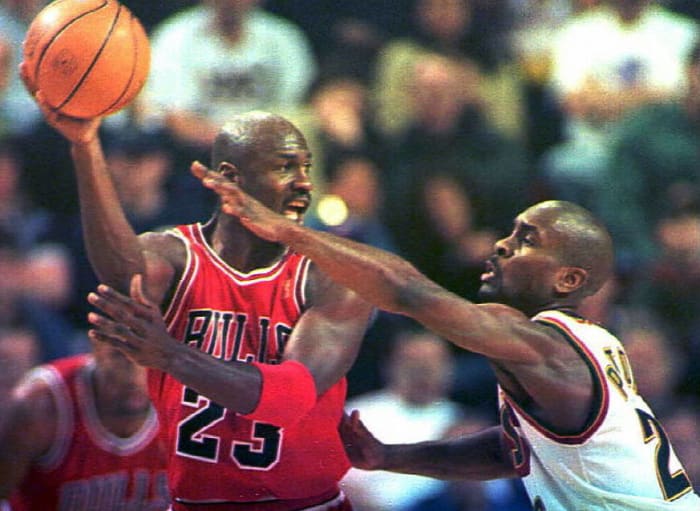
Dan Levine, Getty Images
Before we get into the actual draft, we need to understand where the league was at when the draft rolled around in June. The Chicago Bulls were coming off a then-record 72-win season and their fourth NBA championship (their first since the un-retirement of Michael Jordan). The Toronto Raptors and Vancouver Grizzlies completed their expansion seasons. Kevin Garnett also finished his rookie season, setting off a trend of players skipping college and going straight into the NBA. Shaquille O’Neal was set to become the biggest free-agent prize in recent memory.
The Philadelphia Sixers won the draft lottery after a dismal 18-64 season.
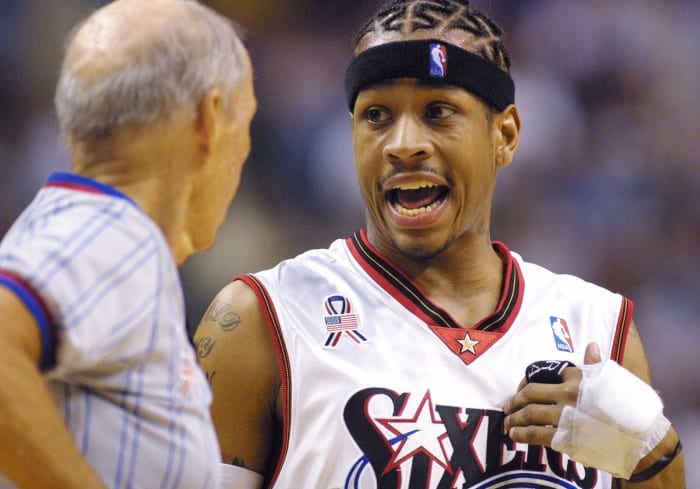
Tom Mihalek/AFP via Getty Images
Iverson was a transcendent player who left his mark on the NBA. It wasn’t just his play on the court, where he was an 11-time All-Star, 4-time scoring champion, and the 2001 MVP, but his style set trends for the next generation of athletes. He is a cultural legend. His best season was the 2000-2001 campaign where he led the league in scoring with 31.1 points and led his team to the NBA Finals. While the 76ers would lose to the Lakers in five games, his Game 1 effort of 48 points (including his step-over of Tyronn Lue) in the win was his finest moment.
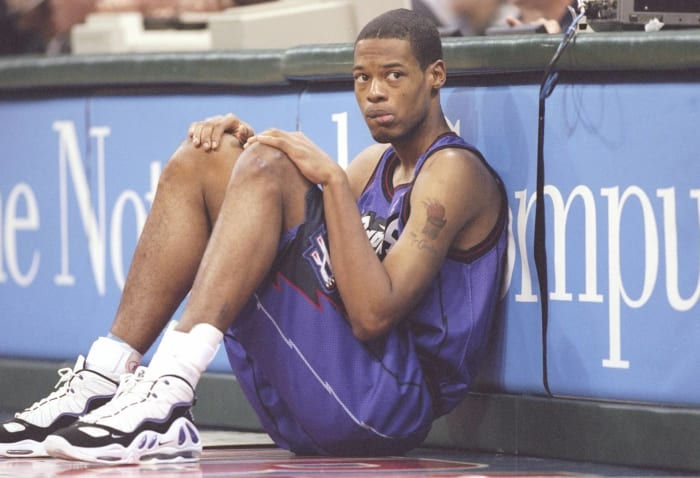
Stephen Dunn / Getty Images
The Toronto Raptors won 21 games in their inaugural season and were building around 1996 Rookie of the Year Damon Stoudamire. Looking to pair Stoudamire with a big man made selecting UMass center Marcus Camby the easy choice. He would only play two seasons in Toronto, as he would be dealt to the Knicks for Charles Oakley and Sean Marks during the 1998 draft.
Camby would become the only player selected in the top six of the 1996 draft to not average double-figures for his career, but he grabbed 2,200 more rebounds in his career than any of his fellow draftees. Over his 17 year career, he won the 2007 Defensive Player of the Year Award with the Nuggets and would reach one NBA Final — 1999 with the Knicks.
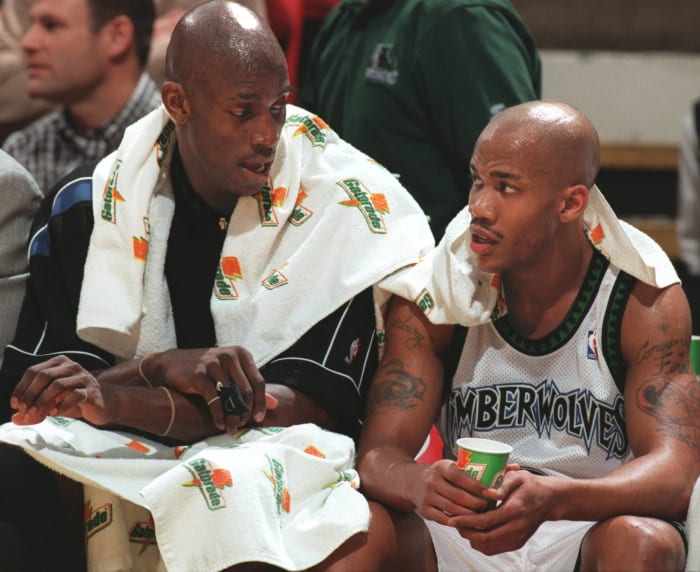
Marlin Levison/Star Tribune via Getty Images)
After Marcus Camby and Sharif Abdur-Rahim went second and third in the draft, one of the biggest deals of the draft occurred. With the fourth pick in the draft, the Milwaukee Bucks selected point guard Stephon Marbury from Georgia Tech. Soon after, the Minnesota Timberwolves took UConn sharp-shooter Ray Allen. Fifteen minutes later, the two would be swapped.
At the time, Minnesota was the buzzworthy franchise. A year after drafting high schooler Kevin Garnett, the Wolves were pairing him with “Starbury” and setting up for a dynamic point guard-athletic forward duo that could vault the franchise to the next must-see team. It didn’t work out that way as Marbury was unhappy and forced his way out in three years. Allen would play six-plus years in Milwaukee before being dealt to Seattle. He would eventually get to play with Garnett … in Boston … where they’d bring the Celtics their 17th championship in 2008.
Allen would go on to become a Hall of Fame player, winning a second title with the Miami Heat and becoming one of the greatest three-point shooters in history. Marbury would bounce around with the Nets, Suns, Knicks, and Celtics (yes, where he’d be teammates with Allen) before embarking on a highly successful career in the Chinese Basketball Association.
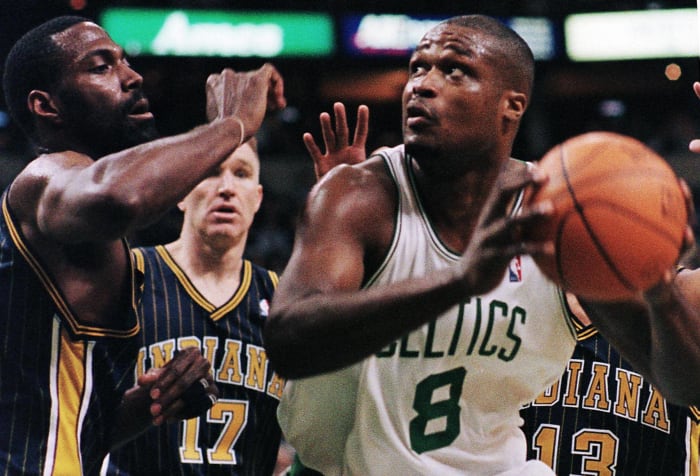
John Mottern/Getty Images
Boston moved up three spots in the draft when they swapped picks with the Mavericks by what turned out to be a steal of a trade. Boston gave up Eric Montross and their No. 9 pick (who would turn into Samaki Walker) for the No. 6 pick and a 1997 first-round pick (who would turn into Ron Mercer). With the sixth pick, the Celtics picked Antoine Walker who would have a very successful career in Boston. He would average over 20 ppg in five of his seven seasons in Boston and reach three All-Star games.
He would be dealt to the Mavericks (them again) before the 2003-2004 season and would bounce around the league over the next five years … winning a title with the 2006 Heat.
6 of 16
Nets nearly took a shot at the kid
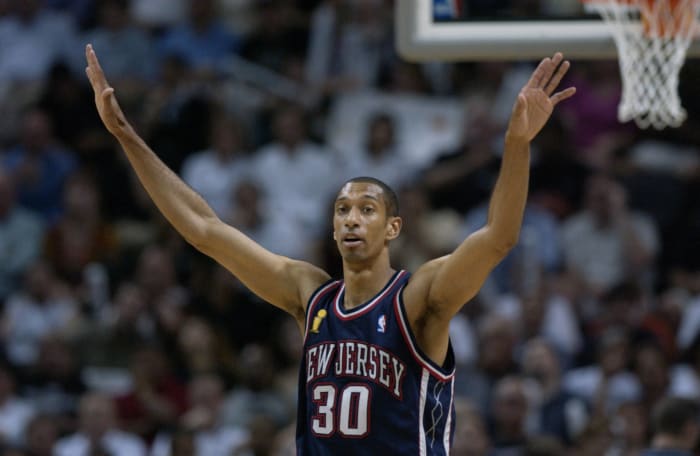
Ezra Shaw/Getty Images
With the No. 8 pick in the draft, new New Jersey Nets head coach John Calipari knew he wanted a scorer at the wing. They traded Derrick Coleman for Shawn Bradley in the middle of the 1995-1996 season and had an up-and-coming big man in Jayson Williams they were excited about. The frontcourt was retooled, but the backcourt was a big mess. They had also dealt Kenny Anderson to the Charlotte Hornets for Kendall Gill, but Gill played just 11 games before injuring his hand. The two choices that Calipari was considering were Kerry Kittles, who was Villanova’s all-time leading scorer and won the Big East Player of the Year in 1995, or a high school kid named Kobe Bryant. The Nets went with the surer thing in Kittles.
Kittles started off his career with a bang, averaging 16.4 ppg as a rookie and 17.2 ppg the following season. Knee injuries would plague him after that, and he played just eight seasons in the league before retiring. He was an important role player for the Nets’ back-to-back Eastern Conference championships in 2002 and 2003.
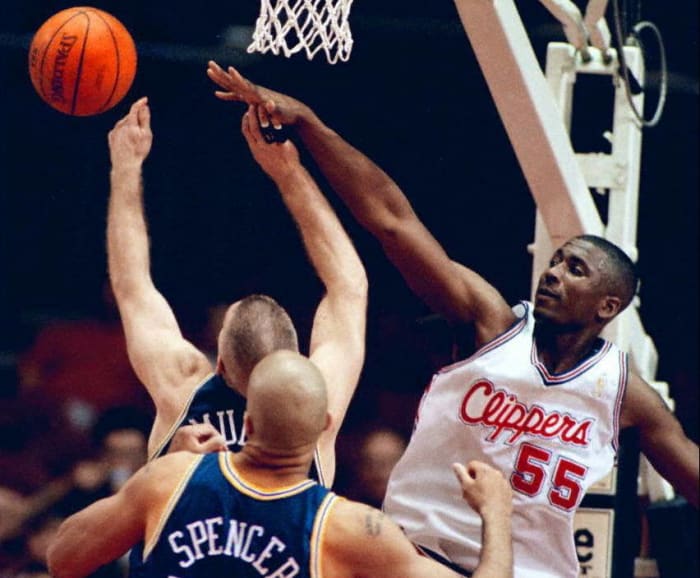
Vince Bucci/AFP via Getty Images
After the Boston Celtics drafted Antoine Walker with the 6th pick, the draft hit quite a lull. Lorenzen Wright (Clippers), Kittles, Samaki Walker (Mavericks), Erick Dampier (Pacers), Todd Fuller (Warriors), and Vitaly Potapenko (Cavaliers) were selected from picks 7 through 12 and none of them reached an All-Star game. Kittles, who went 8th, was the most successful of that bunch (averaging 14 ppg for his career) but only lasted eight seasons. Dampier, Wright, and Walker would have lengthy careers as mainly backup bigs.
Those six players would score a combined 27,871 points in their NBA career. That would be 5,772 less than the guy that would be picked at No. 13.
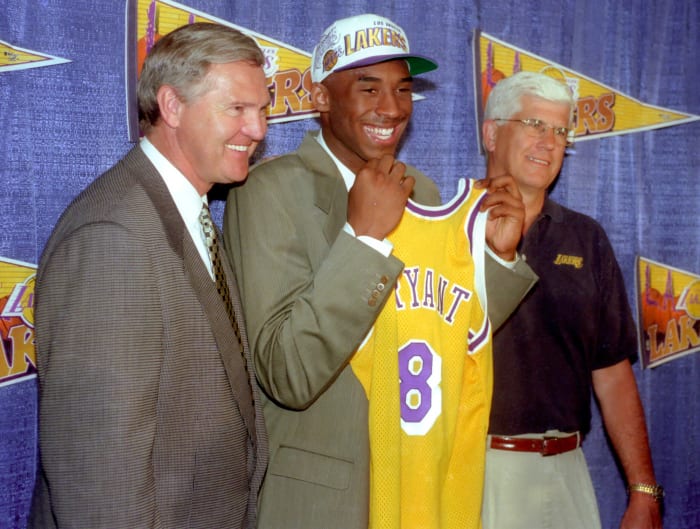
Steve Grayson/WireImage/Getty Images
The best player to come from this draft ended up not being drafted until the unlucky 13th pick — and made by a franchise that he wouldn’t even play for. The Charlotte Hornets selected high school guard Kobe Bryant with that pick and would trade him to the Lakers for Vlade Divac. The deal nearly was nixed as Divac threatened to retire instead of going to Charlotte. He relented and the rest is history.
Kobe won five championships with the Lakers, was an All-Star 18 times, and All-Star MVP 4 times, 12-time all-defensive team, and the 2008 MVP. He and Shaquille O’Neal formed one of the NBA’s most lethal duos in history and, to date, the last three-peat in league history. His “Mamba Mentality” has motivated people from all walks of life and has been a foundation for many of today’s NBA stars.
Bryant tragically died with his daughter and seven others in a helicopter crash on January 26, 2020. He was 41.
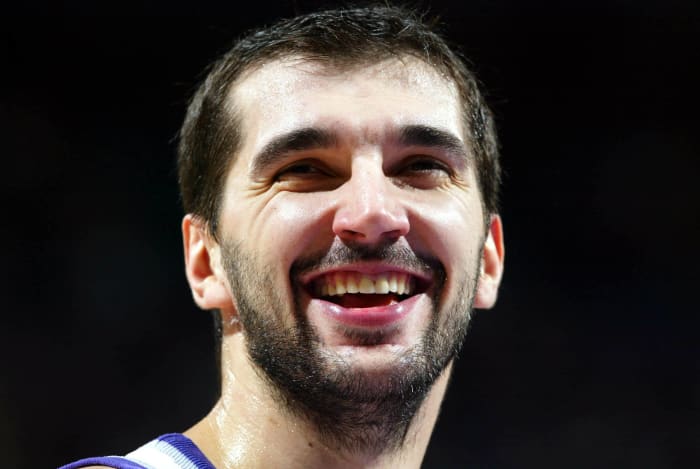
Jed Jacobsohn/Getty Images
With the Hall of Fame talent taken in this draft, people tend to forget how good Peja Stojakovic was. While Stojakovic was drafted in with the 13th pick in 1996, he wouldn’t play in the NBA until 1999. After a couple of seasons where he was a role player, he broke out in 2000-2001 as the Kings became a title contender and a rival of the Shaq-Kobe Lakers. While Sacramento couldn’t break through to the Finals, Peja was becoming one of the best scorers in the league. His finest season was 2003-2004, where he set career highs in scoring (he was second in the league with 24 ppg) and rebounding (6.3) while shooting 43% from three and 92.7% from the line.
After eight seasons with the Kings, Stojakovic was dealt to the Pacers. He would bounce around with the New Orleans Hornets and Toronto Raptors before signing with the Dallas Mavericks during the 2010-2011 season. He would come off the bench for a Mavs team that would win an NBA championship. Stojakovic would retire after the series.
10 of 16
Steve Nash goes No. 15
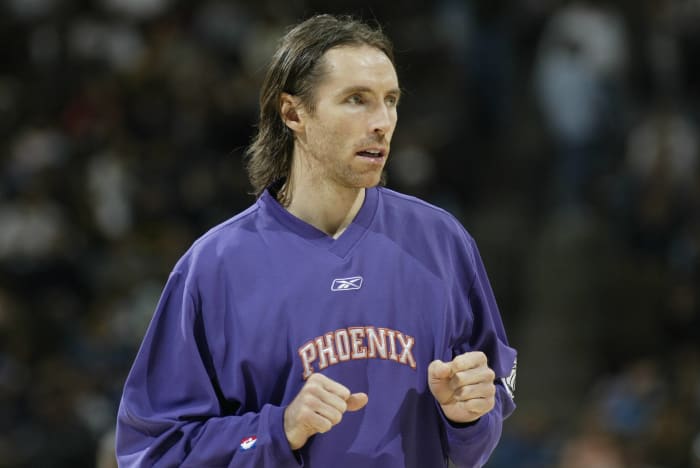
Chris Hatfield/Icon SMI/Icon Sport Media via Getty Images
Steve Nash wasn’t very well known when the Suns used the 15th pick in the draft on him. Born in South Africa, raised in Canada and went to college at Santa Clara, Nash wasn’t a very popular pick by Suns fans … especially since they already had Kevin Johnson and Sam Cassell at point guard. Nash was a slow build to relevance. After two years as a backup in Phoenix and a starter for 67 games in Dallas, Nash would hit his stride in 2000-2001. Teamed with Dirk Nowitzki, Nash became an all-star and one of the best point guards in the league. With Mavs’ owner Mark Cuban unwilling to give Nash the long-term deal he wanted, Nash returned to Phoenix as a free agent.
As a Sun again, Nash would win back-to-back MVP awards in 2005 and 2006 and had the team on the cusp of the Finals every year. He would never reach the Finals, as the Suns’ offensive style (which is the norm now) wasn’t as reliable in the postseason. After an injury-plagued tenure with the Lakers, Nash retired in 2015.
11 of 16
Another high school phenom gets drafted
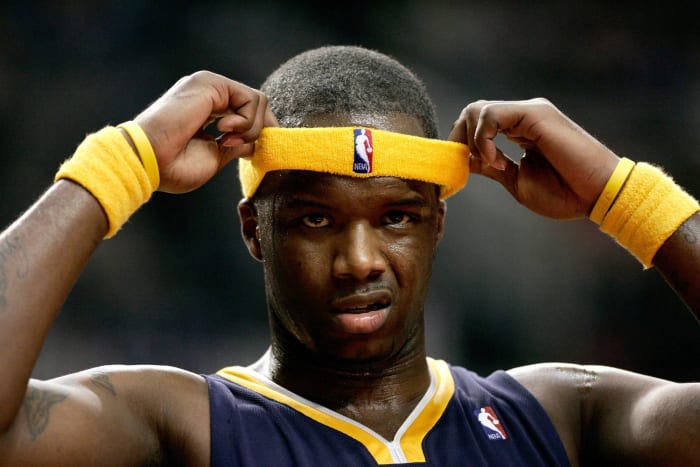
Jonathan Ferrey/Getty Images
Remember that high school players going straight into the draft was a new thing in 1996. While most people focus on Kevin Garnett breaking the barrier and 1995 and Kobe Bryant becoming the first high school guard drafted in 1996, Jermaine O’Neal was another prep stud who went straight to the pros. O’Neal’s career wasn’t as accomplished as KG’s or Kobe’s, and it took some time to get going, but he would end up being a six-time All-Star.
He initially was an end-of-the-bench player for a deep and talented Portland Trail Blazers squad before being traded to Indiana for Dale Davis. O’Neal was replacing a key cog for a Pacers team that just went to the Finals, but he won over fans quickly as he finally showed his promise. He’d become a 20+ ppg scorer over a four-year stretch, but injuries and the ugly “Malice in the Palace” incident kept the Pacers from getting back to the Finals. O’Neal would bounce around the NBA for five other teams before retiring. He would become one of the faces of the Big 3 league from its inception.
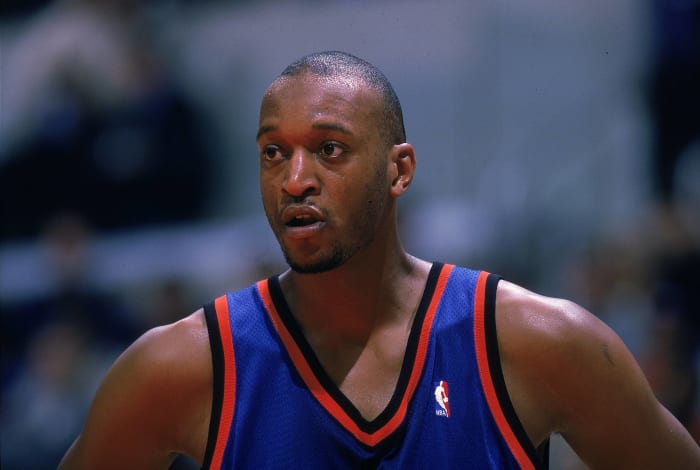
Tom Hauck, Getty Images
There’s always somebody that falls in the draft, leaving fans and the prospect puzzled at what happened. In 1996, that player was Syracuse’s John Wallace. Looking back, Wallace’s fall in the draft (he would end up going 18th to the Knicks) was a sign of how the NBA draft changed. Sure, underclassmen had been going early for years, but in ’96 we saw a bunch of freshmen, sophomores, two high school kids, and a couple of international players taken before Wallace — a four-year player who just led his team to the NCAA tournament championship game.
Wallace was in the waiting area for quite some time as his contemporaries and the aforementioned high school and international players were selected before him … with some even coming back into the green room to show him support.
Or course, he would play just seven seasons in the NBA for five different teams, averaging 7.6 points and 2.8 rebounds during his career, making the scouts’ decision to pass on him the smart move. In fact, of the 17 players picked ahead of Wallace, only Todd Fuller had a shorter career.
After the Knicks picked Wallace at 18, they turned around and selected Kentucky’s Walter McCarty at 19. McCarty’s Wildcats beat Wallace’s Orangemen in the national title game (Wallace had 29 points in that game; McCarty had 4) but now the two would be linked as hopefully the Knicks two forwards for years to come. Of course, they weren’t together for very long, as both were dealt the October after their rookie seasons — McCarty was dealt to the rival Celtics while Wallace was dealt to the Raptors.
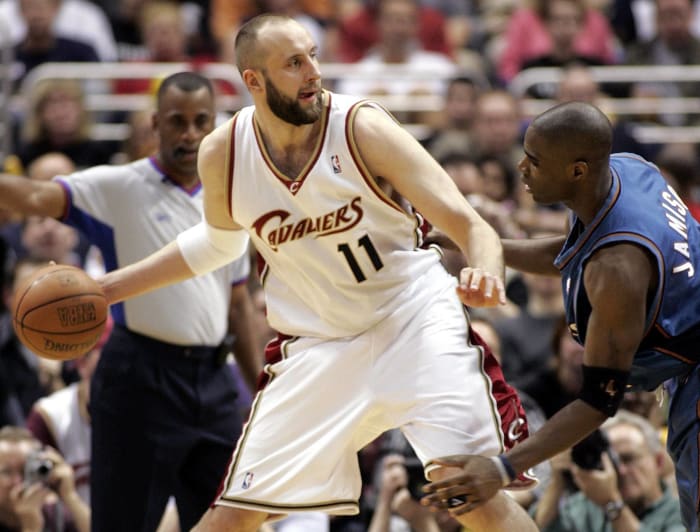
Gregory Shamus/Getty Images
With the 20th pick, the Cleveland Cavaliers selected Zydrunas Ilgauskas out of Lithuania. The Lithuanian national basketball team was emerging on the world stage once the nation gained its independence in 1990. They finished with a bronze medal in the legendary 1992 Summer Olympics (they would also finish with the bronze in the 1996 and 2000 Games) and finished with a silver medal in the 1995 Eurobasket tournament.
Ilgauskas averaged 20 points per game for Atletas before being drafted by Cleveland. His career was both successful (All-Rookie team, two All-Star nods, 13 ppg and 7.3 rpg for his career) and limited (leg and foot injuries bothered him throughout). He did have a nice run during LeBron James’ initial stint with the Cavaliers — highlighted by a trip to the 2007 NBA Finals.
At No. 20, Ilgauskas was the latest draft pick in 1996 to average double figures for his career.
14 of 16
The Fish that saved the end of the first round
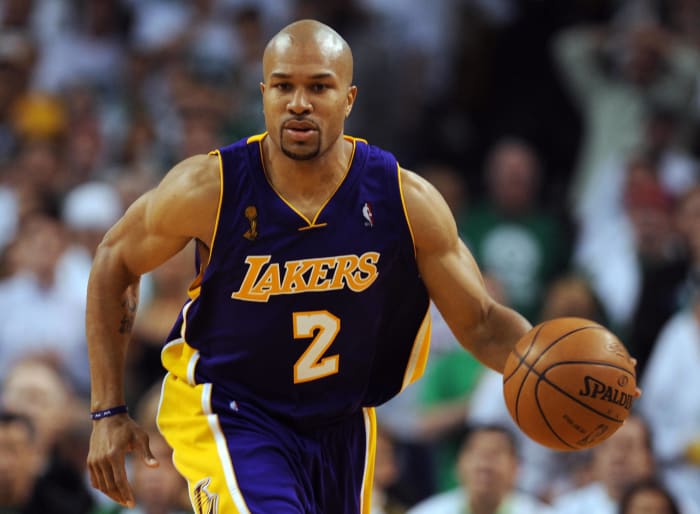
Gabriel Bouys/AFP via Getty Images
The final nine picks of the draft were littered with guys that either didn’t make it long (Roy Rogers, Dontae Jones, Efthimios Rentzias, and Martin Müürsepp) or … with all due respect to No. 26 pick the Junkyard Dog Jerome Williams, relatively insignificant careers (Travis Knight, Brian Evans, Priest Lauderdale). There was one major exception: Derek Fisher.
Fisher was known as a tough, physical defender at Arkansas-Little Rock and could be a useful combo guard at the next level. With the Lakers landing Kobe Bryant in a trade with Charlotte … and their roster tore down due to unloading contracts to sign Shaquille O’Neal … Fisher was the kind of strong-minded player that could perform for a high-profile franchise with high profile teammates.
Fisher would win five NBA championships with the Lakers, first as a key role player and occasional starter for the 2000-2002 threepeat teams and then as an ice-cold defender and big-shot taker for the 2009-2010 back-to-back title squads. He would play 18 seasons in the NBA for the Lakers, Warriors, Jazz, Mavericks, and Thunder.
15 of 16
Second round finds
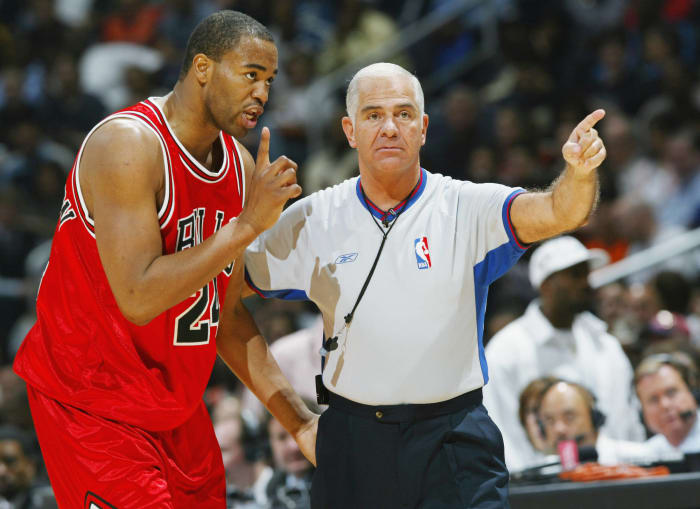
Doug Pensinger/Getty Images
There are always diamonds (or at least some really nice gems) found in the second round of the NBA draft — just look at former 2nd rounder and 2021 MVP Nikola Jokic as an example. While no MVP-caliber talent came out of the second round of the 1996 draft, there were a few guys that lasted quite a while in the league.
Othella Harrington (No. 30) played 12 seasons, with his best seasons coming with the Vancouver Grizzlies. Moochie Norris (No. 33) had a 9-year career, most notably with the Rockets. Jeff McInnis (No. 37), Randy Livingston (No. 42), Malik Rose (No. 44) and Shandon Anderson (No. 44) all had solid NBA careers.
Eleven of the 29 second-round picks never played a game in the NBA.
16 of 16
Undrafted Hall of Famer
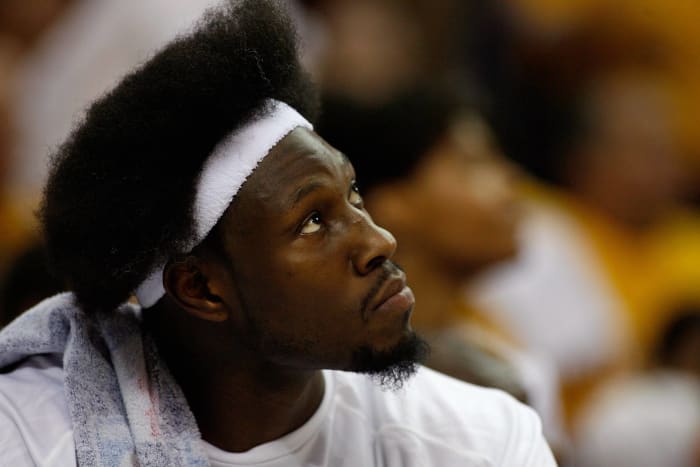
Gregory Shamus/Getty Images
One prospect who went undrafted in 1996 was Virginia Union’s Ben Wallace. Wallace would find a spot with the Washington Bullets, slowly building up minutes as a defensive presence in the paint. He would be dealt to the Orlando Magic in 1999, where he’d start 81 games. After one season, he’d be dealt with Chucky Atkins (another 1996 undrafted player) to the Pistons in the sign-and-trade deal that sent Grant Hill to Orlando.
Obviously, he became an All-Star player in Detroit. He’d win the Defensive Player of the Year four times, make the All-NBA team five times, win two rebounding titles, two Eastern Conference championships, and the 2004 NBA title. In September, he will be inducted into the Basketball Hall of Fame.
He was also a key figure in one of the ugliest moments in league history: The Malice in the Palace. The Pistons-Pacers brawl began when Wallace was fouled hard by Indiana’s Ron Artest. Wallace was enraged and threw his signature headband at Artest, after which Pistons fans began throwing things at Pacers players. Soon after, players and fans got into a horrific brawl in the stands.
[ad_2]
Source link




